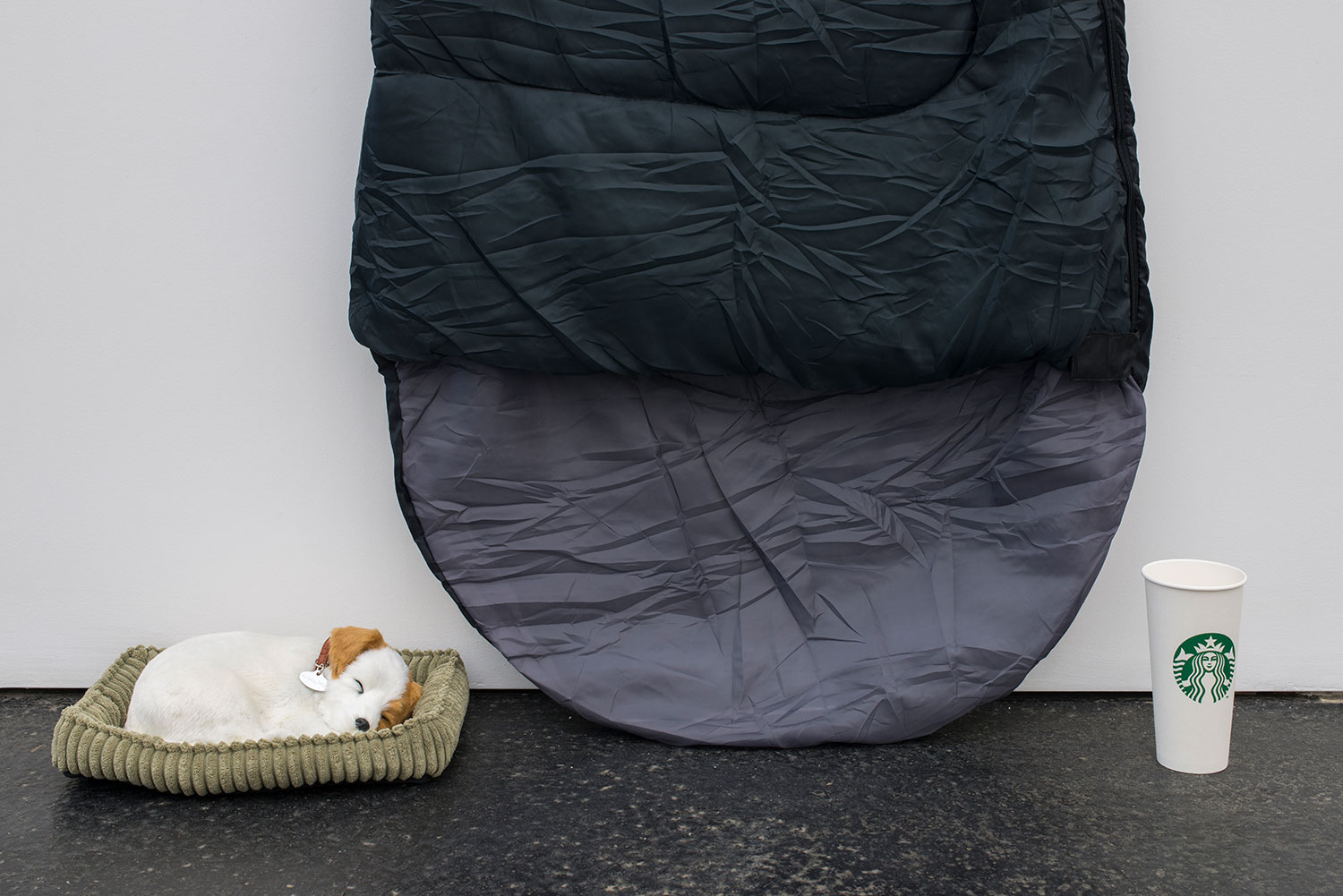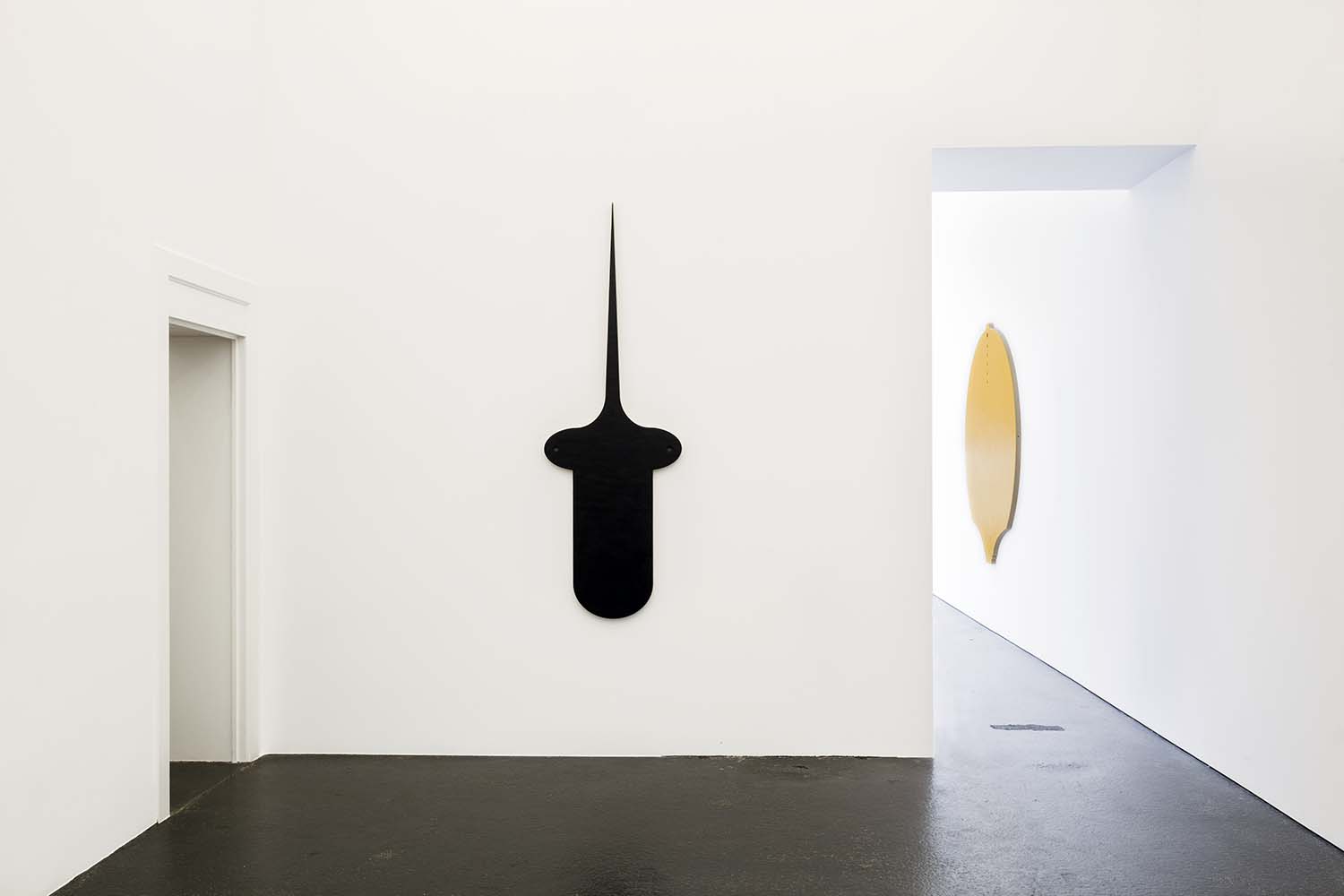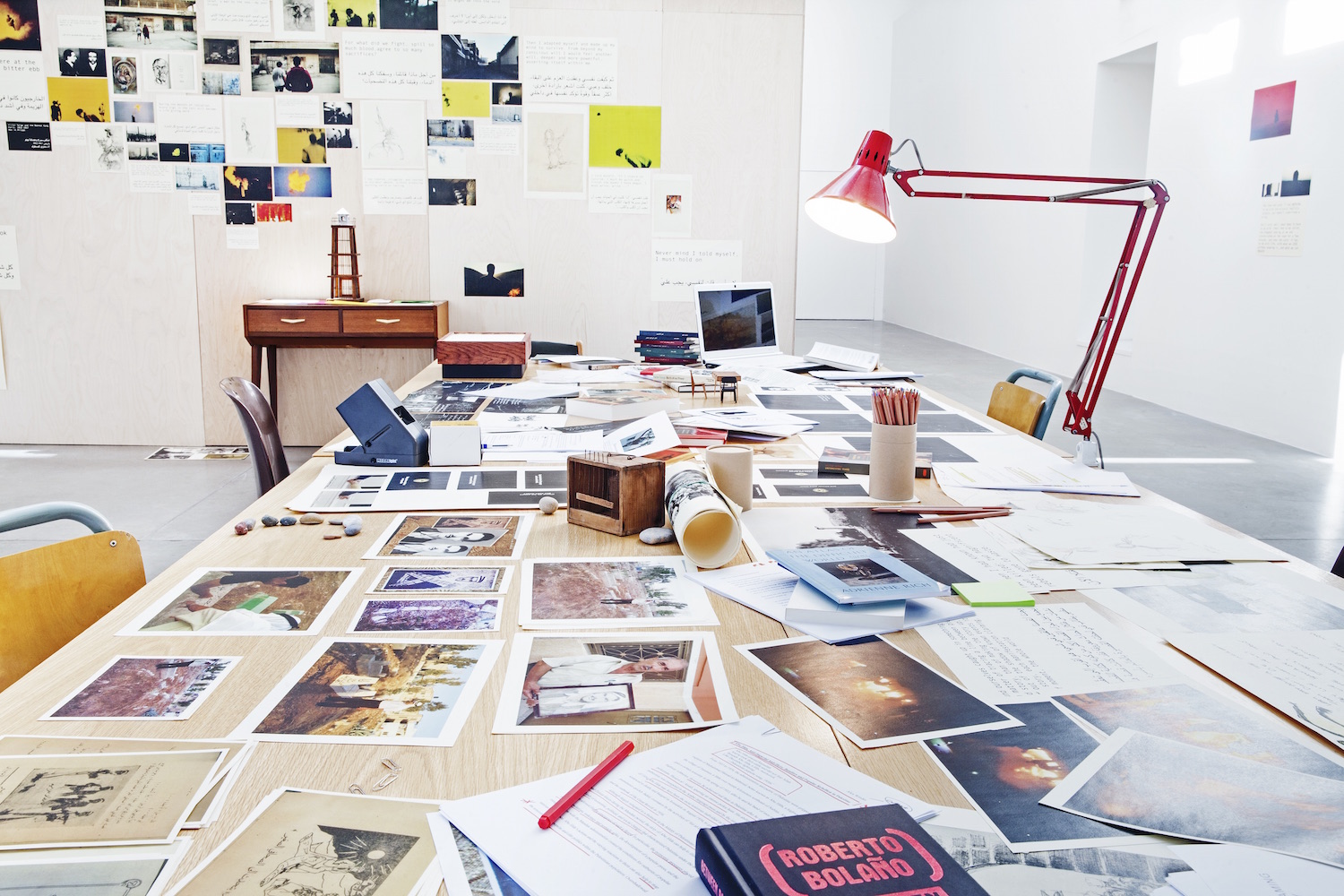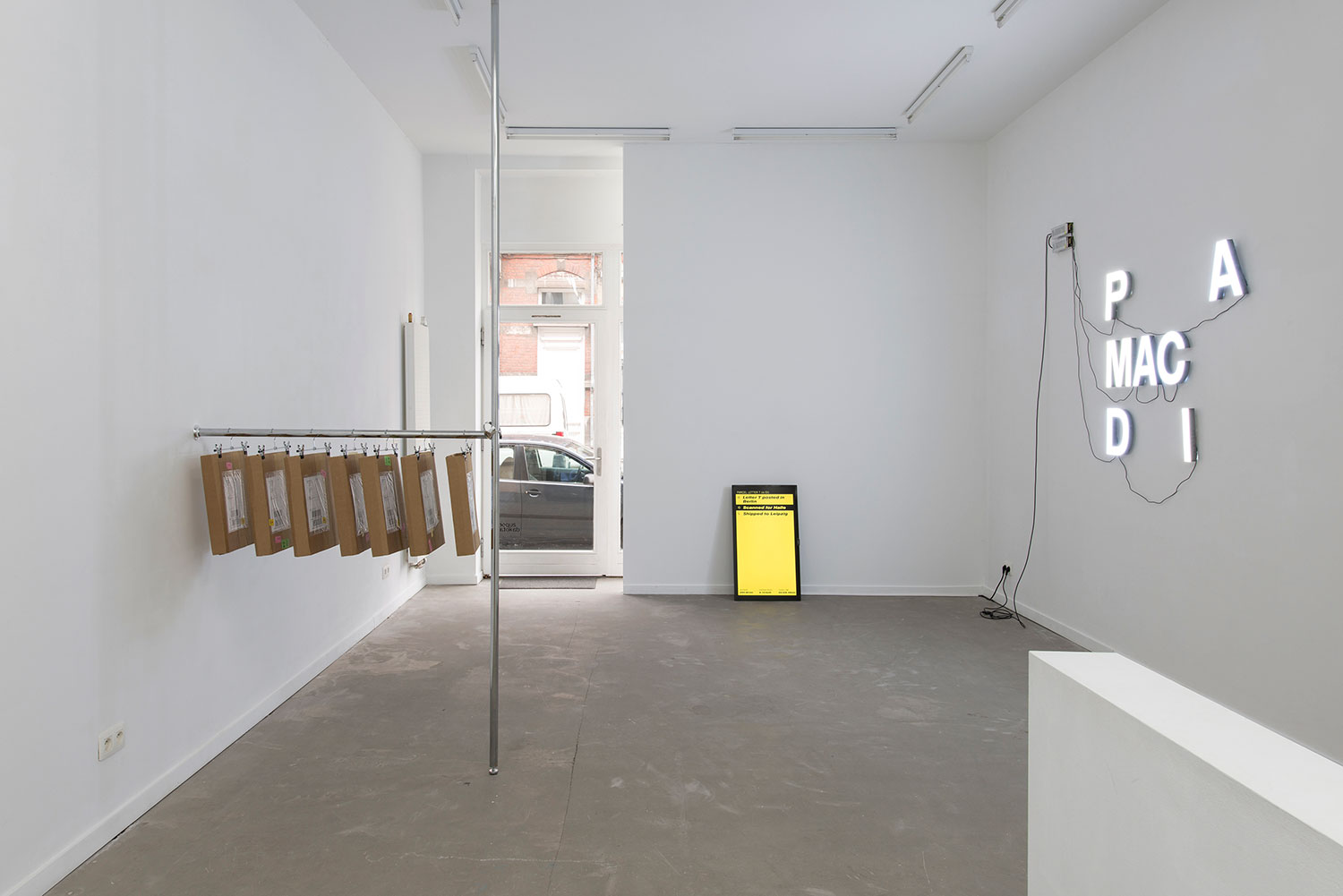For his exhibition “Drummen” at Office Baroque, Terence Koh covered the floor of the gallery in soil, and placed eighty-eight graphite powder and charcoal drawings encased in glass around the perimeter of the space.
The first sunlit room displays a central rudimentary fire pit, which had been burning since opening night. By the windows, newly planted shoots sprout from the ground, and nearby are bowls of seeds brought by the artist from California for the viewer to plant in the soil. Upon entering the second darkened room, the viewer is given a candle to gaze upon the drawings in flickering light. Standing in the middle of this artificial cave is the titular drum, with a robotic arm beating at 220 beats per minute, a frequency known for its ability to agitate our cells, organs, and fluids, and used for trance induction from times immemorial.
The drawings bring to mind the mysterious Nazca lines of Peru or the hillside chalk carvings found in England, gigantic etchings that instigated grandiose theories of alien contact with early civilizations. They appear damaged, partly burned in the fire pit. This gesture points toward a belief that is central to many forms of spirituality: hailing the gods by offering the smoke of material objects, their essence, to feed upon, thus placing the drawings in a dual state, as the ritual destruction increases their narrative value. As art objects, the sacrifice is not a loss but an addition.

The exhibition asks us to go back and forth between our bodily experience of the artworks and an imaginary cosmic viewpoint, looking inside oneself as well as looking down from the sky, beseeching the attention of celestial voyeurs. It feels as though the artist tries to create a rupture in time by making it fold in on itself. A feeling pervades that time/history has shrunk, has becoming tangible, and that the germinal marks of the first humans are now at our fingertips. “Drummen” could be seen as an incantation to reach a transhistorical kinship, a kind of Phillip K. Dick-ian lamination of historical layers under the music of a robotic drum, pulsating at the rate of an eternal heartbeat.
There is a marvelous poetry in the image of the artist as suggested by this exhibition — at home in the American wilderness, communing with extraterrestrial life forms, undertaking a rich and introspective quest to define a new form of spirituality at the crossroads between technology and shamanism. Here, spirituality is conveyed through simulacra rather than documentation. Koh’s work cleverly questions the possibility of sharing rituals without fetishizing the artifacts associated with them over their inner meanings; the smoke rises not to the sky but to the ceiling. The ritual is for us dislocated, dissected for display. The soil, seeds, and shamanic beliefs are taken from their historical and geographical context and brought to an urban environment, here dressed in a kind of nature-drag. Is there an afterlife for the seeds the visitor has planted in the soil or do they become themselves a sacrifice to the onward march of time and gallery programming?





